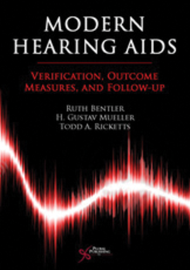Modern Hearing Aids has the right balance of light-heartedness and formal writing to keep the reader interested throughout.
Looking at the overall book, it has quite a lot of information that is relevant to experienced clinicians, newly qualified clinicians and students. However, some of the more in-depth chapters such as: ‘Prescriptive Formulas and Programming’ and ‘Probe Microphone Clinical Uses’ may be better suited to students as it provides the reader with an extensive background and history as well as in-depth information on what to do in a clinical setting.
While these sections may appear to be better suited to students, or even newly-qualified clinicians, the added ‘technical tips’, ‘points to ponder’ and ‘soapbox’ sections definitely provide food for thought and can bring a change to the way experienced clinicians validate and verify hearing aids.
Each chapter also includes smaller sections titled ‘key concepts’ and ‘things to remember’ which highlight some of the main points in the chapter and things which may be useful to use within the clinical setting on a day-to-day basis.
With this in mind, the authors have remained successful in their approach to the target audience.
The book doesn’t just look at the technical side of hearing aid fittings: the chapters looking at ‘Auditory Rehabilitation and Validation: Self-Report Outcomes’ allow the reader to look at the whole picture. From setting up the hearing aid to ensuring the patient is happy with what they leave the clinic with.
Overall, the book is very informative, providing the reader with relevant information to keep them interested throughout.




